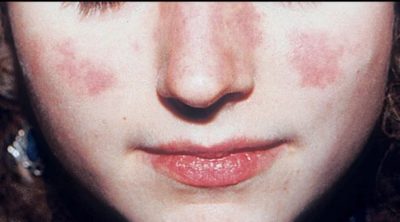
Even medical experts have been known to confuse psoriatic arthritis with lupus erythematosus (SLE), which is more commonly known as lupus. Many symptoms, such as joint discomfort and skin complaints, are similar across the two conditions. However, there are several variances and methods to distinguish them.
Lupus and arthritis are different disorders, but lupus commonly leads patients to develop arthritis or joint discomfort. People need to be aware of the differences between lupus and arthritis because of the different causes and treatments. There may be a genetic relationship between lupus and arthritis but, there are also major genetic variances.
This article is about the differences between lupus and psoriatic arthritis, causes, symptoms and how to diagnose lupus and psoriatic arthritis.
What is Lupus?
Lupus is a long-term autoimmune disorder in which the body’s immune system is hyperactive and inadvertently attacks healthy parts of the body.
Lupus affects the following areas:
- bones and joints
- blood
- brain
- tissues of the skin and the mucosa
- internal organs
While lupus may have a severe impact on the body, each person’s experience with it is unique.
What is Arthritis?
Arthritis is a condition that causes swelling and pain in one or more joints. The most common symptoms of arthritis are joint pain and stiffness, which tend to become worse with time. Arthritis erodes the tissue that keeps the ends of bones from scraping against each other in the joints. The friction causes more inflammation. It results in joint discomfort and swelling, ultimately limiting their movement.
Lupus Symptoms
Lupus affects each individual differently. Your experience may differ from a person who also has the condition. The majority of people will have flares, which means their health will deteriorate at times and then improve. The symptoms may manifest gradually or abruptly and may be permanent or transient.
You may notice the following symptoms of lupus:
- A butterfly-shaped rash that covers your nose and cheeks
- You will feel exhausted.
- Joint pain, stiffness, or inflammation
- Inadequate blood cell count (anaemia)
- Hands, feet, and legs swelling
- Fever
- Sensitivity to the sun or other sources of light that results in skin lesions
- When you feel cold or stressed, your fingers and toes will become white or blue.
- Headaches or chest discomfort
- Mouth or nose ulcers
- Hair loss
Psoriatic arthritis Symptoms
Your symptoms fluctuate like those of lupus sometimes condition improves and then worsens. It’s possible that you’ll get tired and have joint discomfort, swelling, and warmth.
You may notice the following symptoms of psoriatic arthritis:
- Swelling of the fingers or toes
- Feet discomfort, usually in the heel or base of the foot
- Pain in the lower back
- Scaly spots on the skin surface that peel
- Nails with cracks or discolouration
Cause of Lupus
It begins with an assault on your organs and tissues by your immune system, your body’s line of protection against germs. Lupus causes inflammations and affects the brain, heart, skin, and blood cells. The specific origin of lupus is unknown to medical professionals. They believe it may have something to do with the genes that predispose you to lupus and the elements you come into touch with that activate the condition. A few trigger points are :
- Sunlight
- Infections
- Medications such as anti-seizure and blood pressure
Causes of Psoriatic Arthritis
Psoriatic arthritis may occur if you have psoriasis, a skin disease that forms red patches and silvery scales on your skin. Sometimes individuals have psoriasis first and subsequently develop psoriatic arthritis, whereas others develop arthritis symptoms first. Psoriatic arthritis, like lupus, occurs when your immune system destroys healthy tissues and cells. It results in inflammation of the joints and excessive cell production in the skin.
While the exact psoriatic arthritis causes are still unknown, similar to lupus, genes and triggers probably have a role.
Lupus Diagnosis
Lupus can’t be diagnosed with a single test. Your doctor will do a physical examination and may order blood and urine tests to get further information about your health. A chest X-ray to check for fluid or inflammation in the lungs or echocardiography to check for heart abnormalities may also be recommended.
Psoriatic Diagnosis
Some tests, such as X-rays to search for abnormalities in your bones or joints and blood tests to check for inflammation, may be required to determine whether you have psoriatic arthritis.
During the exam, your doctor may also check for indications of psoriasis on your skin and nails, joint pain and inflammation. They’re going to inquire about your medical history. You may expect your doctor to rule out any other disorders that could be causing the same symptoms as what you’re experiencing. You might develop gout, for example, if you experience swelling and discomfort just in one joint. Osteoarthritis might develop if there is no or very little swelling.
Consider working with your doctor to identify the best treatment options whether you have Lupus or Psoriasis.
Treatment
Lupus and psoriatic arthritis are chronic diseases that need regular medical attention. A doctor provides a specific set of treatments for each ailment. Treatments may overlap at times.
Psoriatic Arthritis
Psoriatic arthritis symptoms may be effectively treated with a wide range of therapeutic choices. Based on the severity of your illness and symptoms, your doctor will prescribe medicine.
Psoriatic arthritis may be treated using a variety of methods, including:
Nonsteroidal anti-inflammatory drugs:
NSAIDs may be quite helpful in the treatment of minor pain and inflammation.
Aspirin, Advil and Motrin (ibuprofen) and Aleve are all examples of these medications (naproxen). Many may be purchased at the pharmacy online.
Medication to treat or alleviate the symptoms of chronic disease, such as disease-modifying antirheumatic medications Otrexup is the most often administered DMARD.
Biologics:
Doctors utilise biologics largely to treat moderate-to-severe psoriatic arthritis. These medications target particular components of the immune system that can reduce psoriatic arthritis flare-ups. In addition, they act as an anti-inflammatory and analgesic by inhibiting the production of pro-inflammatory proteins.
You can manage psoriatic arthritis with the following additional treatments:
- Physiotherapy
- Occupational therapy.
- Healthy diet
- Exercise
Lupus
Lupus may be treated with a variety of medications. Your doctor will decide which medications are most likely to be effective depending on the symptoms and your condition.
Lupus may be treated with a variety of methods, including:
NSAIDs:
NSAIDs can alleviate pain and swell in the muscles and joints.
Corticosteroids:
Prednisone and other corticosteroids like it may relieve inflammation and discomfort by calming the immune system.
Corticosteroids may have a significant impact on lupus symptoms in a short period. They are only recommended for brief periods because of the negative side effects.
Antimalarial medications:
Joint discomfort, skin rashes, weariness, and general inflammation may all be treated with medications like hydroxychloroquine and chloroquine phosphate.
BLyS – specific inhibitors:
These medications suppress aberrant B-cells (immune cells that produce antibodies) observed in lupus patients.
Benlysta (belimumab) is the most often prescribed medication in this class for the treatment of lupus symptoms.
Immunosuppressants:
Lupus patients who are at the most critical stages of the disease have been prescribed these medications. People with significant symptoms affecting organs such as the brain, kidneys, heart, or lungs are often prescribed this medication by doctors.
Other medications:
Your doctor may recommend medication for high blood pressure, which is connected to your lupus. If you have lupus, you may be prescribed medication to prevent blood clots from forming because of the condition.
Check Out Our Blog: WHAT’S HEALTHY COMPETITION?






